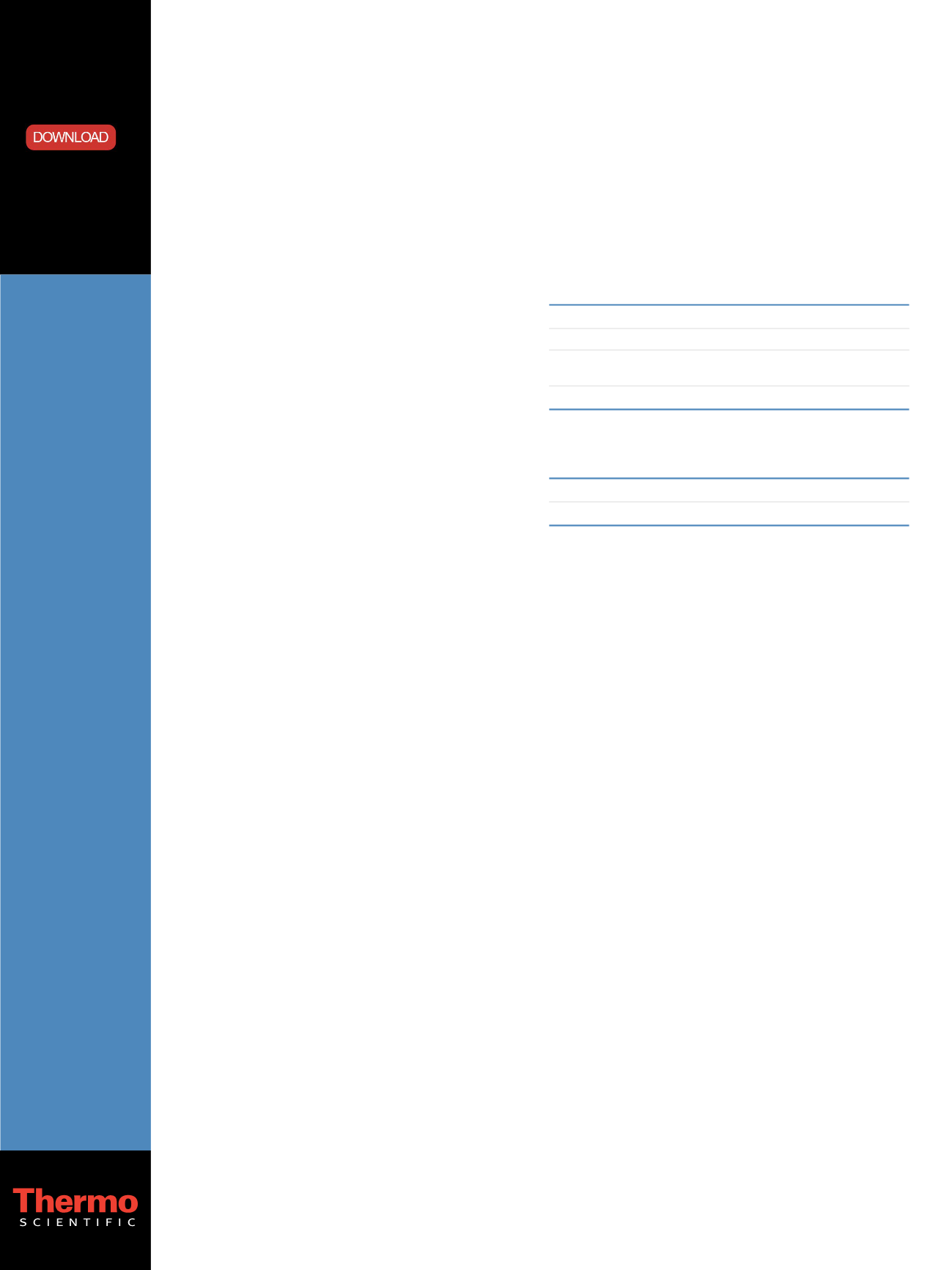

Antidepressants and Neuroleptics Quantitation
Using Tandem Mass Spectrometry and
Automated Online Sample Preparation
Hans-Rudolf Kuhn; Unilabs, Switzerland
Bénédicte Duretz; Thermo Fisher Scientific, Les Ulis, France
Introduction
Liquid chromatography-mass spectrometry (LC/MS)
is a powerful technique applied in clinical research for
the analysis of a broad number of analytes. Offline
sample preparation techniques (solid phase extraction
and liquid-liquid extraction) are widely used but are
often time consuming and labor intensive. The Thermo
Scientific Transcend system powered by TurboFlow
TM
technology provides an alternative approach simplifying
sample preparation.
Goal
To develop a fast and efficient LC-MS/MS method using
Thermo Scientific TurboFlow technology for the analysis
of 18 antidepressants and neuroleptics.
Experimental
Sample Preparation
A 100 µL aliquot of serum or plasma sample was
mixed with 300 µL of methanol containing internal
standards (Venlafaxine-d6 and Sertraline-d3) at
100 ng/mL. The resulting mixture was thoroughly
vortexed, allowed to stand for 10 minutes at room
temperature and then centrifuged at 4 °C for 10 minutes.
Chromatography and Mass Spectrometry
High pressure LC (HPLC) was performed using the
Transcend™ TLX system. Serum and plasma samples
were extracted using a TurboFlow Cyclone P
(0.5 x 50 mm) extraction column. Chromatographic
separation was performed using a Thermo Scientific
Hypersil GOLD column (50 x 3 mm, 3 µm particle size).
Gradient elution was used. Total analysis time was
8 minutes.
Application
Note: 556
Key Words
• TurboFlow
Technology
• TSQ Quantum
Access MAX
• Triple Quadrupole
• Clinical Research
The TurboFlow method conditions were as follows:
Eluent A:
0.1% Formic acid in water
Eluent B:
0.1% Formic acid in methanol
Eluent C:
Acetonitrile, isopropanol and acetone
(45/45/10, v/v/v)
Eluent D:
Acetonitrile, water (90/10, v/v)
The analytical LC conditions were as follows:
Eluent A:
0.1% Formic acid in water
Eluent B:
0.1% Formic acid in methanol
The entire LC effluent from the sample injections
was directed to the Thermo Scientific Ion Max source,
utilizing heated electrospray ionization (HESI), on a
Thermo Scientific TSQ Quantum Access MAX triple
stage quadrupole mass spectrometer in positive ion
selected reaction monitoring (SRM) mode.



















